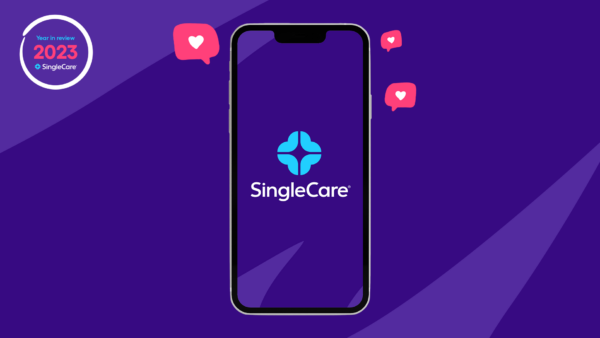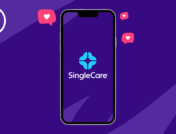As a seemingly healthy person in my mid-20s, most people don’t suspect that I am living with chronic pain. When I tell people about my condition, it feels like many still doubt that I’m serious or assume I’m exaggerating. But truthfully, like many with invisible conditions, I’m probably more likely to downplay the severity of my discomfort on the rare occasion that I do mention it. It’s the kind of thing that seems to make people uneasy: pain that’s frequent or constant, with no means to alleviate—even though I always wish the ibuprofen in my bathroom cabinet would magically do the trick.
My journey: Living with chronic pain
My chronic pain started in my late teens and has been worsening for years. It’s localized most intensely in my neck, shoulders, and back. Along with it are daily headaches and weekly migraines. The cause of it all is the weight of my breasts, wreaking havoc on my body and worsening my pain.
What is chronic pain?
Chronic pain is “any pain that has gone on for more than 12 weeks,” according to Spencer Kroll, MD, Ph.D., physician with the Kroll Medical Group in New Jersey. Though, many live with it for years or decades.
It is a common, wide-reaching problem. The U.S. Centers for Disease Control and Prevention (CDC) estimates at least 20% of adults in the U.S. have chronic pain of some type. In other words, many millions of Americans are dealing with invisible and ongoing pain. I’m far from alone in my experience.
Diagnosis
Large breast cup size is an important cause of upper back and shoulder pain. I wake up off and on throughout the night with shooting pain or headaches. Every morning my shoulders are stiff and achy, sending shockwaves of pain through from my neck through my back and into my head. Doing dishes or walking uphill pulls my upper body forward and leaves my lower back and neck completely miserable. Some days I know as soon as I get out of bed that the combination of migraine and neck pain means I just won’t be able to sit at my computer and work for the day.
A good healthcare provider can help you find the root cause of the pain while treating it. This is particularly critical for younger people. Because it’s less common for chronic pain to appear at a young age, a medical issue can usually be uncovered—and providers don’t want lifelong chronic pain to be the diagnosis if it doesn’t have to be. In these cases healthcare providers tend to be “even more aggressive in looking for the causes of pain,” prioritizing things like MRIs, CAT scans, and bloodwork, says Dr. Kroll. The source of my pain was visually apparent and was diagnosable by a primary care provider and a physical therapist, though more elusive causes require tests like those mentioned above.
With older patients, these diagnostic tests are also fairly routine options, particularly if pain is persistent despite treatment or does not have a clear cause. However, there is often some pain to be expected during the normal aging process, so it’s more typical to see older patients with chronic pain issues or for the cause to be clear (such as arthritis).
Causes
“Oftentimes there was physical trauma, emotional trauma, or chemical trauma that initiated the [pain] process” for patients, says Nona Djavid, doctor of chiropractic and nutrition expert. With my case, my primary care provider and physical therapist came to the same conclusion: My large chest was causing my pain. Other common causes of chronic pain include:
- Inflammation, like that caused by arthritis
- Infection, such as an ear infection
- Illness, such as cancer
- Muscular dysfunction
- Chronic repetitive motion
- Autoimmune diseases, such as fibromyalgia or rheumatoid arthritis
However, this list does not cover every possible origin. There are a massive variety of causes, locations, and intensities of chronic pain conditions. This can make the nebulous condition hard to categorize or track.
Treatment
The options for treating or reducing chronic pain are nearly as vast as the potential causes. This can often delay relief if the first treatment is ineffective. In my case, I was sent to physical therapy first and went for many months, but found no relief from this route other than a confirmation of cause, so I’m now exploring alternatives.
Medications for chronic pain
Certain prescription medications can provide relief, including:
- Nerve pain medications, such as Neurontin (gabapentin) and Lyrica (pregabalin)
- Antidepressants, such as Cymbalta (duloxetine), which have a pain-relieving effect for many patients
- Controlled substances with less addictive potential than opioids, like Ultram (tramadol)
- Corticosteroids such as Decadron (dexamethasone)
- Analgesic injections
Many physicians hesitate to prescribe opioid painkillers for chronic pain because of their addictive potential. However, non-opioid solutions can be effective.
RELATED: What are PRP injections?
Alternative treatment options for chronic pain
Medication is far from the only possible solution. Other treatment options for chronic pain include:
- Physical therapy
- Acupuncture
- Local electrical stimulation
- Brain stimulation
- Surgery
- Chiropractic treatment
The best cure for my personal predicament is surgery (not without its costs, time commitments, and anxieties). I’ve tried some other pain-alleviating routes in the meantime (including physical therapy and migraine medications) and have been slowly investigating more options recently (like chiropractic treatment and acupuncture).
Ultimately, what works for each person may be one of these things, a combination of several, or something else altogether. Some people may get some relief from treatments like these but need surgery or deeper medical intervention to fix the root condition causing the pain.
For a lot of people, myself included, just being aware of the range of options for treatment, and the fact that so many other people are in a similar boat (be it one we can’t see), provides the first bit of relief.











